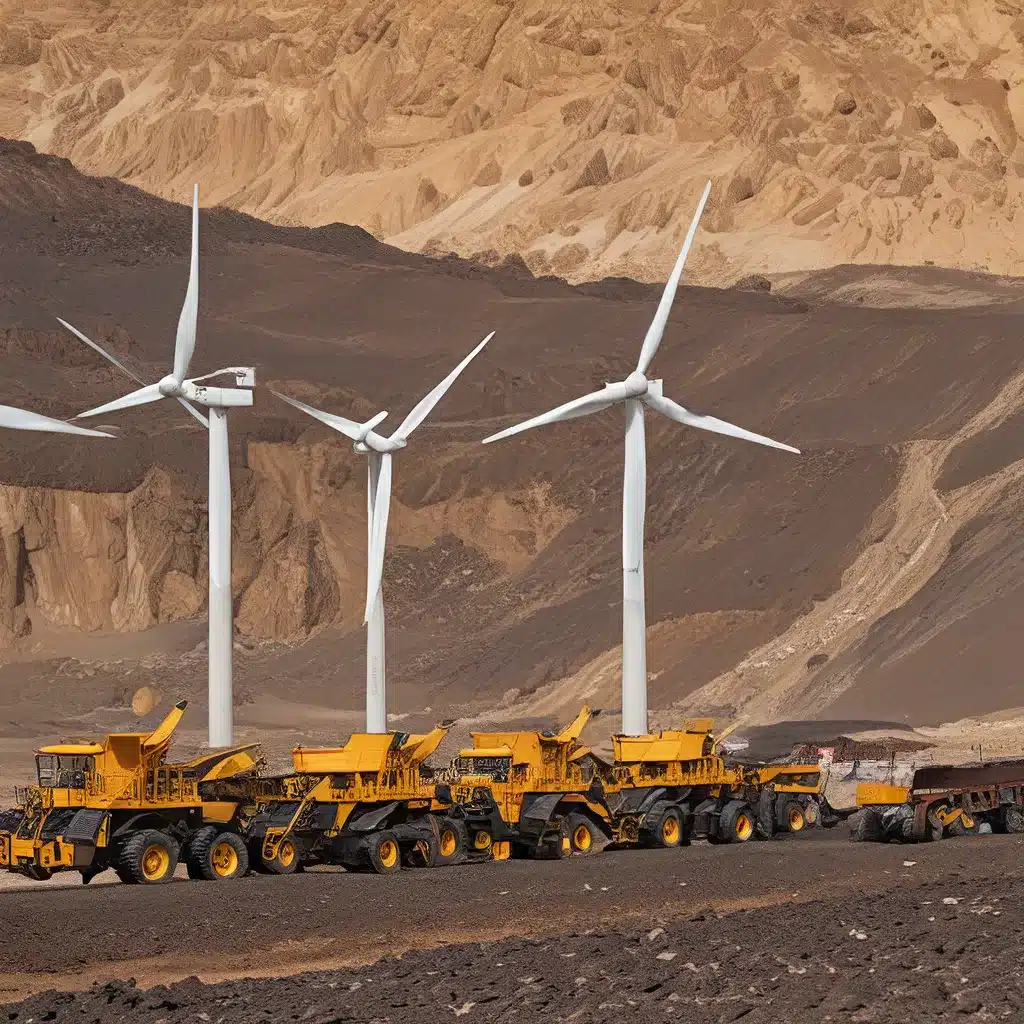
As the world races to transition to renewable energy sources and combat climate change, we find ourselves in a curious predicament. You see, the very infrastructure and technologies that will power our sustainable future – solar panels, wind turbines, electric vehicles – all require an abundance of critical minerals that must be extracted from the earth. And therein lies the rub.
The Extractive Dilemma: Fueling Clean Energy with Dirty Mining
While the shift to renewable energy is undoubtedly a positive step, the current methods of extracting the necessary minerals are often anything but clean and green. In fact, the mining industry has long been plagued by environmental destruction, human rights abuses, and a blatant disregard for the wellbeing of local communities. It’s a dirty little secret that the renewable energy revolution would prefer not to talk about.
According to research from the University of Technology Sydney’s Institute for Sustainable Futures, the demand for key minerals like lithium, cobalt, and nickel could skyrocket in the coming decades to support the growth of electric vehicles, solar arrays, and wind turbines. In a 100% renewable energy future, the demand for these minerals could be as high as 426% of current economically viable deposits.
This insatiable appetite for resources is driving a massive expansion of mining operations around the world, often with devastating consequences. From the saltflats of South America to the rainforests of Indonesia, local communities are bearing the brunt of the mining industry’s reckless pursuit of profits. Freshwater contamination, ecosystem destruction, and the displacement of indigenous populations have become all too common.
But the problems don’t end there. The International Energy Agency has also highlighted the significant greenhouse gas emissions associated with the extraction and processing of these critical minerals. The energy-intensive nature of mining operations means that the environmental impact extends far beyond the local communities, contributing to the global climate crisis that renewable energy is meant to solve.
It’s a vicious cycle that threatens to undermine the very foundations of the clean energy transition. As the demand for minerals skyrockets, the industry is being forced to explore more remote and resource-intensive sources, further exacerbating the environmental and social challenges. Something has to give.
Responsible Sourcing and the Path to a Just Transition
The good news is that there are solutions, but they will require a fundamental shift in the way we approach mineral extraction and the development of renewable energy infrastructure. It’s time to embrace a holistic, responsible sourcing approach that prioritizes environmental protection, community engagement, and ethical labor practices.
As the Center for American Progress has highlighted, effective governance and institutional frameworks are key to ensuring that the extraction of critical minerals benefits local communities and supports economic diversification, rather than perpetuating a cycle of resource extraction and environmental degradation.
This means strengthening regulatory safeguards, enhancing transparency and anti-corruption measures, and empowering local stakeholders to have a meaningful say in the development of mining projects. It also requires a concerted effort to improve working conditions and eliminate the scourge of child labor, particularly in the artisanal and small-scale mining sectors.
But the responsibility doesn’t stop there. Consumers, investors, and end-use companies must also step up and demand accountability from the mining industry. By prioritizing responsible sourcing and embracing circular economy principles, we can create a more sustainable and equitable supply chain for the clean energy transition.
Powering the Future with Clean, Just, and Equitable Mining
At Firewinder, we believe that it’s possible to power the future with clean, just, and equitable mining practices. By working collaboratively with governments, industry leaders, and local communities, we can develop innovative solutions that minimize the environmental impact of mineral extraction while ensuring that the benefits are shared more fairly.
This might involve new technologies that reduce greenhouse gas emissions, or creative financing mechanisms that channel mining revenues into sustainable economic development. It could also mean supporting the formalization and strengthening of artisanal and small-scale mining operations, providing workers with safer conditions and better economic opportunities.
The path forward is not without its challenges, but the stakes are too high to ignore them. As the world races to transition to renewable energy, we have a responsibility to ensure that the foundation of this new economy is built on a bedrock of sustainability and social justice.
Unlocking a Greener, More Equitable Future
I know it’s a lot to take in, but the truth is, the future of our planet and the success of the clean energy transition depend on our ability to confront these complex issues head-on. It’s a daunting task, but I believe that by working together, we can unlock a greener, more equitable future for all.
Maybe you’re a concerned citizen wondering how you can make a difference. Or perhaps you’re an industry leader looking to implement more responsible sourcing practices. Whatever your role, I encourage you to stay informed, get involved, and be a part of the solution.
Because at the end of the day, we’re all in this together. The path to a sustainable future may be winding and challenging, but I’m confident that if we approach it with empathy, innovation, and a deep commitment to justice, we can create a world that works for everyone – not just a privileged few.
So let’s get to work, shall we? The future is ours to build.

